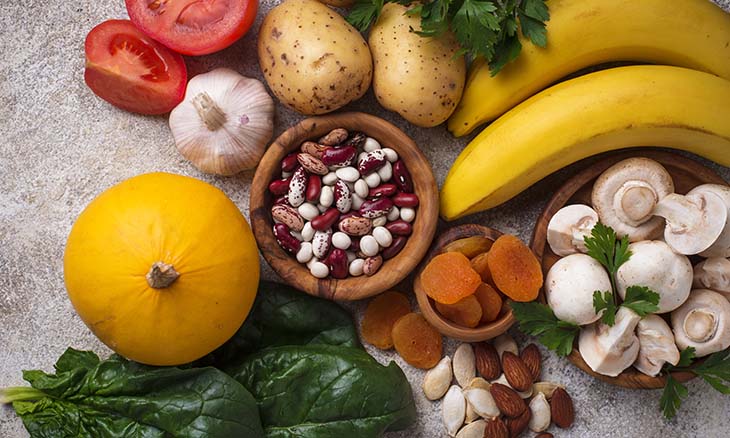
High blood pressure, or hypertension, affects millions worldwide, silently increasing the risk of heart disease, stroke, and kidney issues. I remember my uncle, a jovial man in his fifties, who was shocked when his doctor flagged his soaring blood pressure during a routine checkup. Like many, he didn’t feel “sick,” but the numbers didn’t lie. That moment sparked his journey to manage hypertension naturally, and fruits became his unexpected allies. In this guide, we’ll explore how certain fruits can help control high blood pressure, backed by science, personal insights, and practical tips to make your diet both delicious and heart-healthy. Let’s dive into nature’s bounty and discover how it can support your cardiovascular health.
Understanding High Blood Pressure: The Silent Threat
High blood pressure occurs when the force of blood against artery walls is consistently too high, often defined as readings above 130/80 mmHg, according to the American Heart Association. It’s called the “silent killer” because it often shows no symptoms until complications arise. Factors like stress, poor diet, and genetics play a role, but diet is one of the most manageable aspects. My uncle learned this firsthand when he swapped salty snacks for vibrant fruits, noticing a difference in his energy and readings within weeks. Fruits, rich in nutrients like potassium, magnesium, and fiber, can lower blood pressure by relaxing blood vessels, reducing sodium’s impact, and improving heart function. Let’s explore the top fruits that can make a difference.
Top Fruits for Controlling High Blood Pressure
Bananas: Potassium Powerhouses
Bananas are a go-to fruit for hypertension, thanks to their high potassium content. Potassium helps balance sodium levels, easing tension in blood vessel walls. A medium banana contains about 400–450 mg of potassium, contributing to the recommended daily intake of 2,600–3,400 mg for adults. I recall my uncle tossing banana slices into his morning oatmeal, a simple habit that became a staple. Studies, like one from the Journal of the American College of Cardiology, suggest potassium-rich diets can lower blood pressure by 4–5 mmHg in hypertensive individuals.
- How to Enjoy: Blend into smoothies, pair with nut butter, or freeze for a creamy dessert.
- Tip: Choose ripe but firm bananas to avoid excess sugar spikes.
Berries: Antioxidant-Rich Allies
Berries like blueberries, strawberries, and raspberries are packed with antioxidants called flavonoids, which studies link to reduced blood pressure. A 2011 study in the American Journal of Clinical Nutrition found that anthocyanins in berries improved blood vessel function, lowering systolic pressure by up to 12%. I love tossing a handful of blueberries into my yogurt; their tart-sweet burst feels like a treat while supporting my heart. Berries also offer fiber, which helps manage cholesterol—a key factor in hypertension.
- How to Enjoy: Add to salads, blend into sauces, or eat fresh as a snack.
- Tip: Opt for fresh or frozen berries without added sugars to maximize benefits.
Oranges: Vitamin C and Beyond
Oranges are more than just a vitamin C boost; they’re rich in potassium, fiber, and hesperidin, a flavonoid that promotes blood vessel health. A 2020 study in the Journal of Nutrition showed citrus fruits like oranges could reduce blood pressure in overweight individuals. Growing up, my family always had a bowl of oranges on the table, a habit I now appreciate for its health perks. One orange provides about 70 mg of vitamin C and 250 mg of potassium, making it a heart-smart choice.
- How to Enjoy: Eat whole, juice fresh (in moderation), or zest into dishes.
- Tip: Pair with protein to stabilize blood sugar when consuming juice.
Pomegranates: The Heart’s Superfruit
Pomegranates are a powerhouse for heart health, thanks to their punicalagins—antioxidants that improve blood flow and reduce arterial plaque. A 2017 study in Pharmacological Research found that pomegranate juice lowered systolic blood pressure by 5–7 mmHg in hypertensive patients. I once tried pomegranate arils in a salad, and their ruby-red crunch added a gourmet touch while benefiting my heart. They’re also rich in potassium and vitamin K, supporting overall cardiovascular function.
- How to Enjoy: Sprinkle arils on yogurt, blend into smoothies, or drink unsweetened juice.
- Tip: Choose 100% pure pomegranate juice to avoid added sugars.
Avocados: Creamy and Heart-Healthy
Though often considered a vegetable, avocados are fruits loaded with monounsaturated fats, potassium, and magnesium—all allies against hypertension. A single avocado offers over 600 mg of potassium, rivaling bananas. Research from the American Heart Association highlights that healthy fats can lower bad cholesterol, indirectly aiding blood pressure control. I love spreading avocado on whole-grain toast for a satisfying breakfast that keeps my heart happy.
- How to Enjoy: Use in guacamole, slice into salads, or blend into dressings.
- Tip: Store with the pit to keep fresh longer.
Comparison Table: Fruits vs. Blood Pressure Benefits
| Fruit | Key Nutrient | Blood Pressure Benefit | Serving Size | Calories |
|---|---|---|---|---|
| Banana | Potassium (400–450 mg) | Balances sodium, relaxes blood vessels | 1 medium | ~90 |
| Blueberries | Flavonoids | Improves vessel function, reduces systolic pressure | 1 cup | ~85 |
| Orange | Potassium, Hesperidin | Enhances vessel health, reduces pressure | 1 medium | ~60 |
| Pomegranate | Punicalagins | Improves blood flow, lowers systolic pressure | 1/2 cup arils | ~70 |
| Avocado | Monounsaturated Fats | Lowers cholesterol, supports vessel health | 1/2 fruit | ~120 |
Note: Nutrient values are approximate and vary by size. Consult a dietitian for personalized advice.
This table highlights how each fruit contributes uniquely to blood pressure management, making it easy to mix and match for a varied diet. For instance, pairing bananas with berries in a smoothie covers potassium and antioxidants, tackling hypertension from multiple angles.
How Fruits Work to Lower Blood Pressure
Fruits don’t just taste good—they’re scientifically proven to combat hypertension through several mechanisms:
- Potassium-Sodium Balance: Potassium-rich fruits like bananas and oranges help flush excess sodium through urine, reducing blood volume and pressure, as explained by the National Institutes of Health.
- Antioxidant Protection: Flavonoids and punicalagins in berries and pomegranates reduce oxidative stress, preventing artery stiffening, per a Mayo Clinic article.
- Fiber Benefits: Fruits like avocados provide fiber, which lowers cholesterol and supports weight management—key for controlling blood pressure.
- Nitric Oxide Boost: Compounds like hesperidin in oranges increase nitric oxide, relaxing blood vessels, as noted in a Nutrition Reviews study.
Incorporating these fruits daily can create a synergistic effect, amplifying their benefits. My uncle, for example, started blending a “heart smoothie” with bananas, berries, and a splash of pomegranate juice, noticing steadier readings within a month.
Practical Tips for Adding Fruits to Your Diet
Integrating fruits into your routine doesn’t have to be complicated. Here are actionable tips to make it fun and sustainable:
- Start Small: Add one fruit serving daily, like a banana with breakfast or berries as a snack.
- Mix It Up: Combine fruits for variety—try a salad with spinach, oranges, and pomegranate arils.
- Mind Portions: Stick to 1–2 servings per fruit daily to avoid excess sugar, especially if managing diabetes alongside hypertension.
- Go Fresh or Frozen: Fresh is ideal, but frozen fruits retain nutrients and are convenient for smoothies.
- Limit Juice: Juice lacks fiber and can spike sugar; opt for whole fruits or dilute juice with water.
I learned this the hard way when I overdid fruit smoothies, thinking more was better. Moderation is key, and pairing fruits with protein or healthy fats helps stabilize blood sugar.
Lifestyle Synergy: Beyond Fruits
While fruits are powerful, they work best alongside other lifestyle changes. Regular exercise, like a 30-minute walk, can lower blood pressure by 5–8 mmHg, per the American College of Sports Medicine. Stress management through meditation or yoga also helps, as does reducing sodium intake to under 2,300 mg daily. My uncle paired his fruit-heavy diet with evening walks, and his doctor was thrilled with the results. Smoking cessation and limiting alcohol further amplify the benefits, creating a holistic approach to hypertension management.
FAQ: Common Questions About Fruits and Blood Pressure
Can I eat too many fruits for blood pressure control?
Yes, overeating fruits can lead to excess sugar intake, especially for those with diabetes. Aim for 2–3 servings daily, balanced with vegetables and lean proteins. Consult a dietitian for personalized guidance.
Are fruit juices as effective as whole fruits?
Whole fruits are better due to their fiber content, which aids cholesterol and blood sugar control. Juices can be high in sugar and low in fiber, so consume in moderation and choose unsweetened versions.
How quickly can fruits lower blood pressure?
Results vary, but studies suggest 4–8 weeks of consistent fruit intake, alongside a healthy diet, can lower blood pressure by 4–12 mmHg. Regular monitoring and medical advice are essential.
Can fruits replace blood pressure medication?
Fruits support blood pressure control but shouldn’t replace prescribed medications. Always consult your doctor before making changes to your treatment plan.
Are canned fruits okay for hypertension?
Canned fruits can work if packed in water or their own juice, not syrup. Check labels for added sodium or sugars, which can counteract benefits.
Conclusion: A Fruitful Path to Heart Health
Managing high blood pressure doesn’t have to feel like a chore. Fruits like bananas, berries, oranges, pomegranates, and avocados offer a delicious, natural way to support your heart while adding vibrancy to your plate. My uncle’s journey taught me that small, consistent changes—like swapping chips for a handful of berries or starting the day with a banana—can lead to meaningful results. Backed by science, these fruits provide potassium, antioxidants, and fiber that work together to relax blood vessels, balance sodium, and protect your arteries.
To make the most of these benefits, start by incorporating one or two fruits into your daily meals, pair them with exercise and stress management, and monitor your progress with your healthcare provider. Explore recipes, experiment with smoothies, and enjoy the process of nourishing your body. For more inspiration, check out heart-healthy recipes on sites like the American Heart Association or consult a dietitian to tailor your diet. Here’s to a healthier heart, one fruit at a time!
